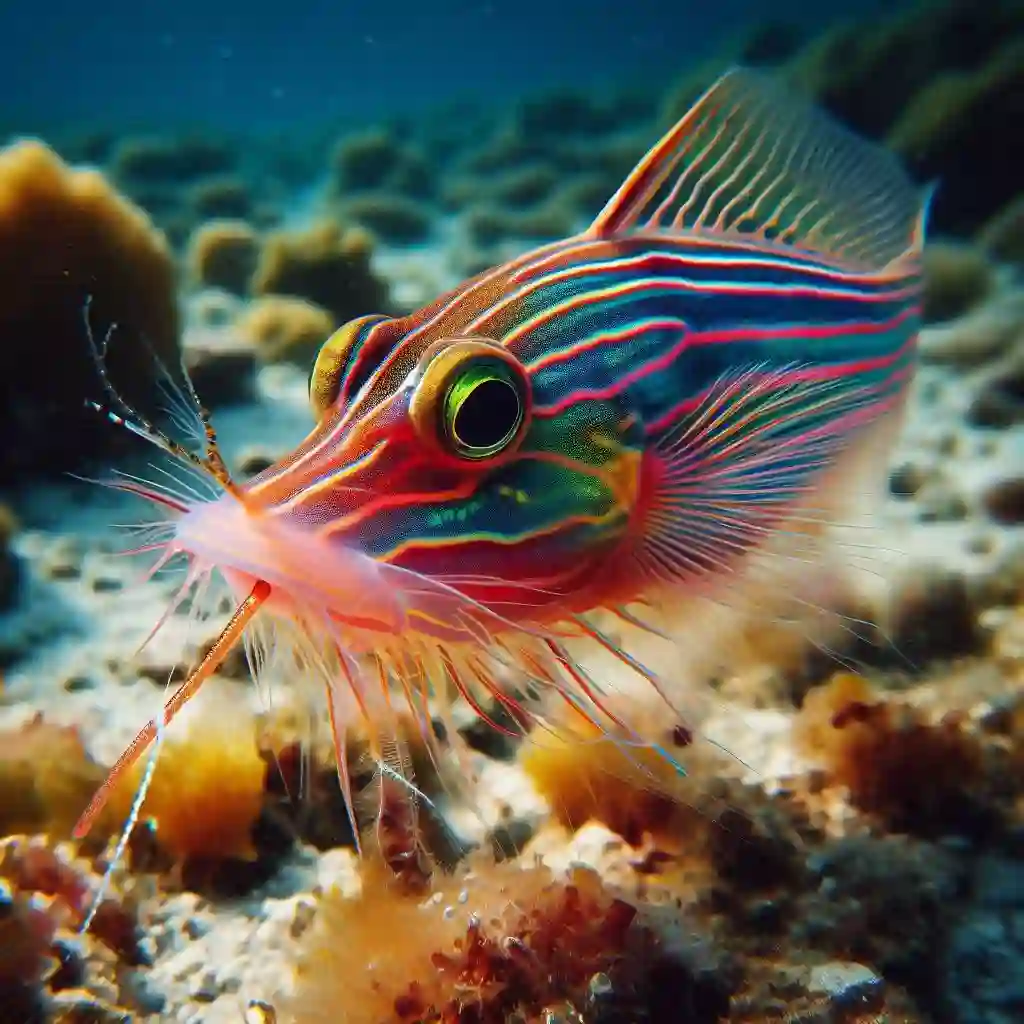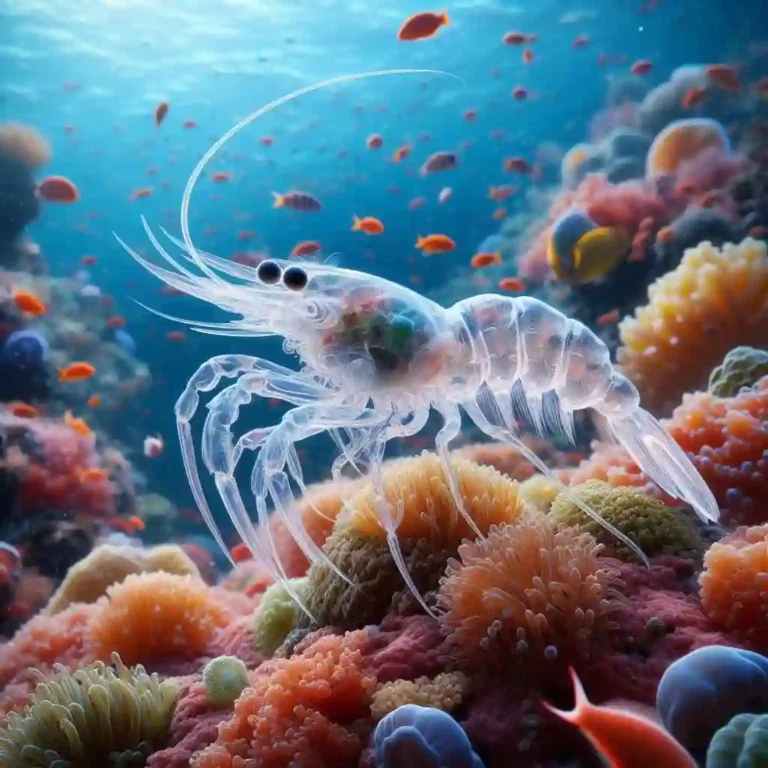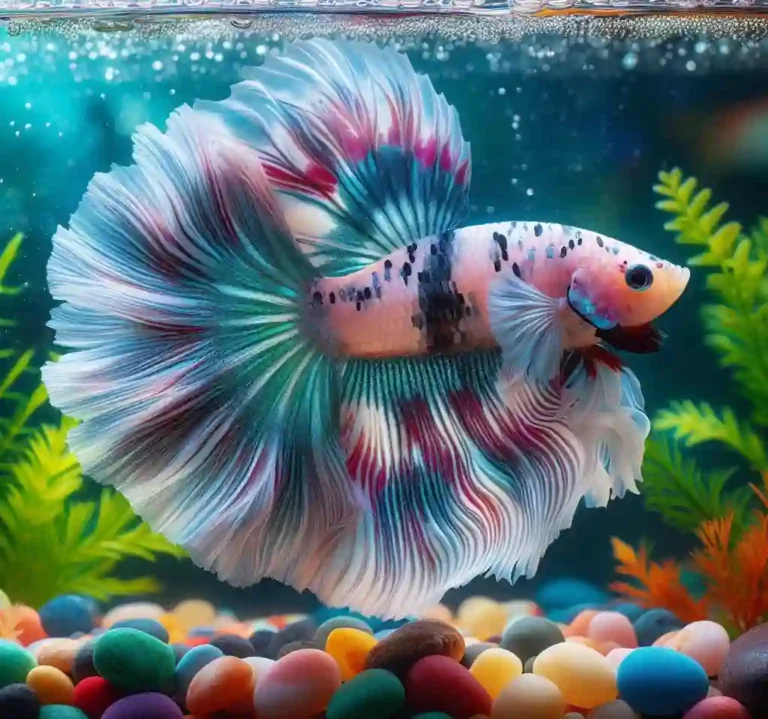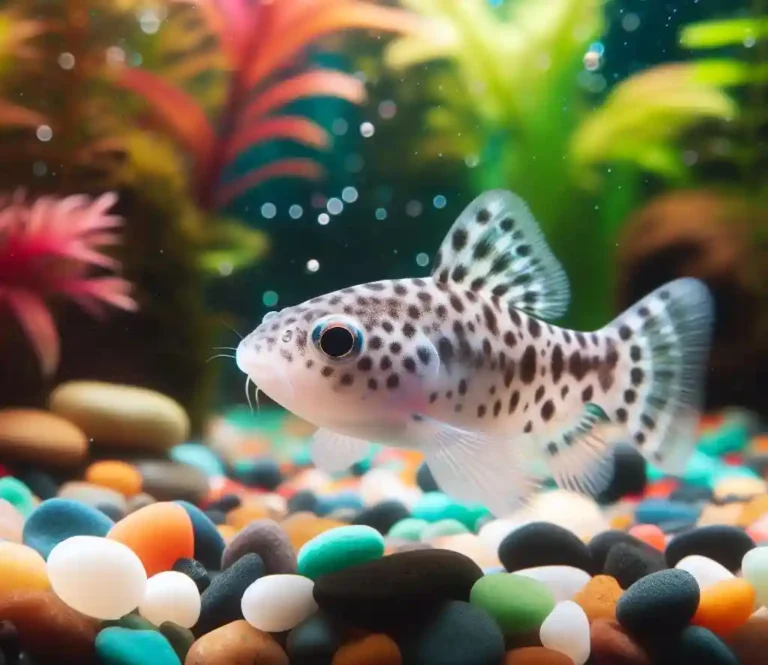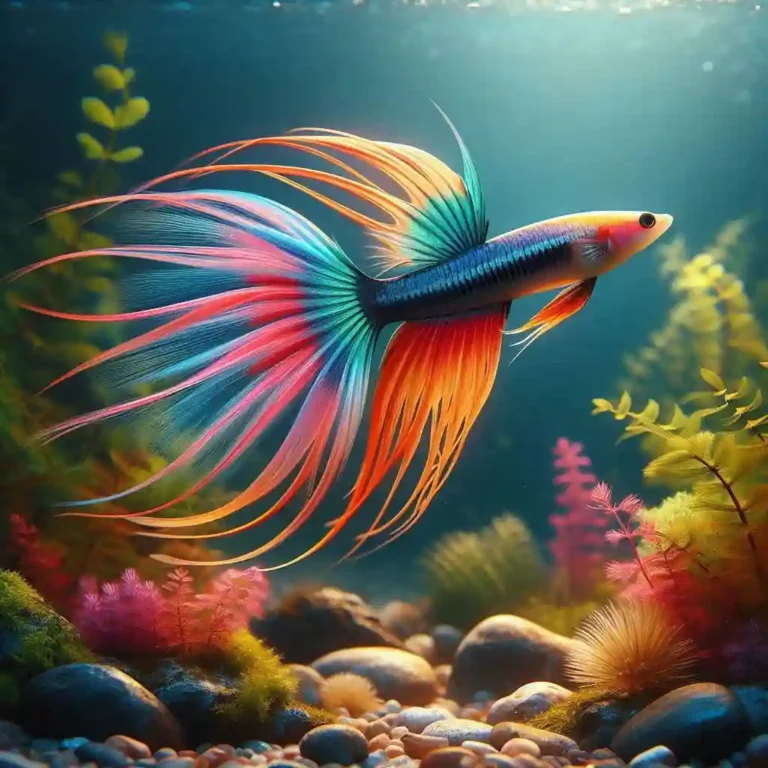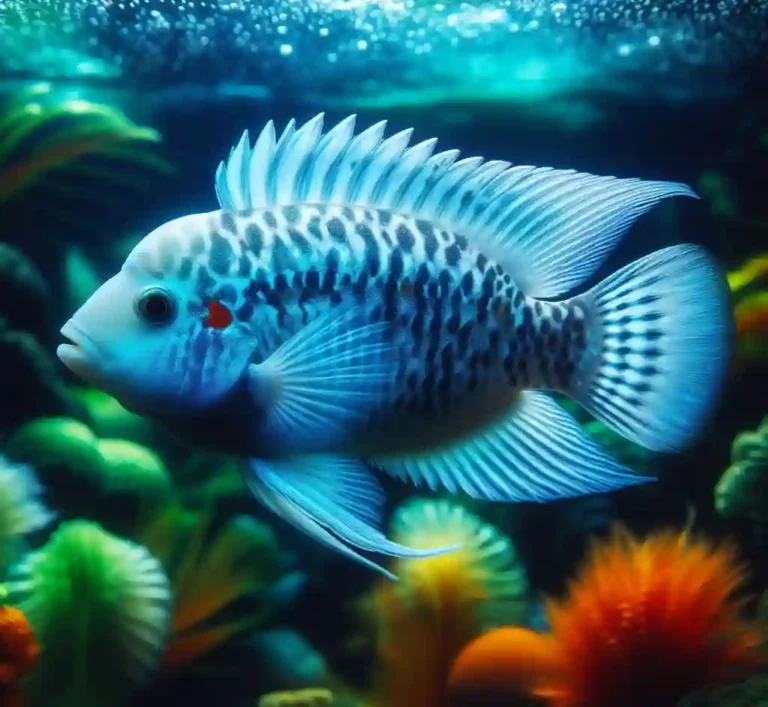String Hanging from Fish: Let’s Find Out The Reason
Have you ever noticed a strange string hanging from a fish you caught or saw at the aquarium? This phenomenon, known as “String Hanging from Fish,” can be quite puzzling.
In this blog post, we will delve into the reasons behind this peculiar occurrence and explore whether it poses any risks to the fish. So, let’s find out why fish have strings hanging from them.
String Hanging from Fish: A Quick Guide
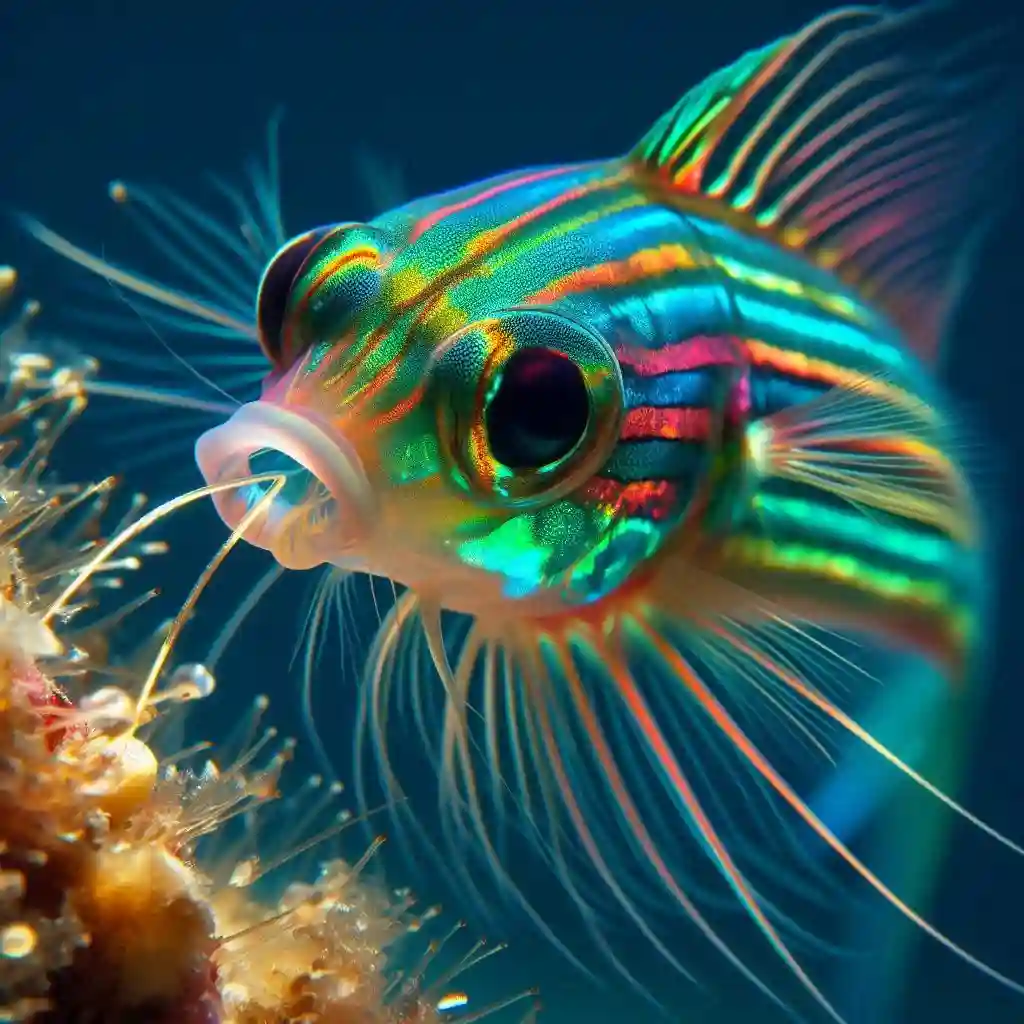
When it comes to understanding the odd sight of a string hanging from a fish, it’s important to approach the topic with curiosity and an open mind. Here are a few key points to keep in mind:
- It’s Not Always Alarming: While the sight might initially seem worrisome, not all strings indicate a problem. They can originate from a variety of sources, both harmful and harmless.
- Common Sources:
- Parasitic Infections: Certain parasites can attach to or embed in fish, leaving string-like protrusions.
- Natural Processes: Mucus production, spawning behaviors, or even just shedding skin can result in string-like appearances.
- Environmental Causes: Strings can also be environmental, such as plant matter or fishing line, accidentally adhered to the fish.
- Observation is Key: Paying close attention to the appearance and behavior of the string can provide clues. Parasitic strings may move independently or look segmented, while non-parasitic strings are usually static.
- Context Matters: Considering the fish’s environment, recent changes, or behaviors can also offer insights into the origin of the strings.
Understanding the Basics of Fish Anatomy
Diving into the world of fish anatomy is a fascinating journey! Fish, with their diverse range of species, have some common anatomical features that allow them to thrive in aquatic environments.
At the heart of fish anatomy are their skin and scales, providing protection and aiding in movement. Beneath the surface, you’ll find gills, essential for breathing underwater by exchanging gases.
Then, there are the fins, which play a pivotal role in steering, stabilizing, and propelling fish through their watery realms. Internally, fish have a set of organs tailored to their life underwater, including a swim bladder for buoyancy control.
Understanding these basic components gives us a glimpse into how fish navigate their underwater world and sets the stage for exploring the intriguing reasons behind the string hanging from fish.
Identifying the “Strings”: Parasites or Something Else?
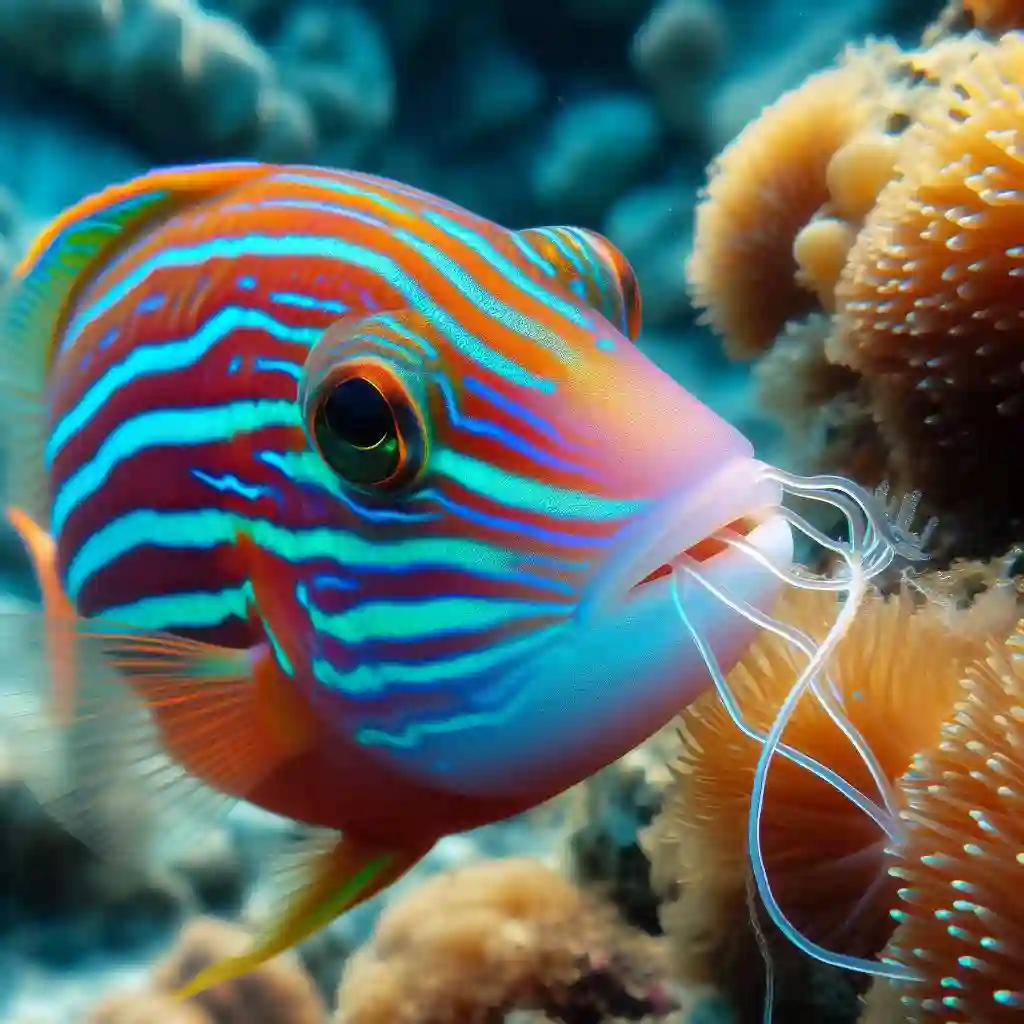
When you spot a string hanging from a fish, you might wonder if it’s a cause for concern. Interestingly, these strings can be the work of parasites like nematodes or tapeworms, which latch onto the fish and leave behind these telltale markers.
But the aquatic world is full of surprises, and not all strings are a sign of parasitic invasion. In some cases, they’re simply a result of the fish’s natural mucus production, a side effect of spawning behavior, or even an accidental snag on underwater debris.
So, before jumping to conclusions, it’s helpful to take a closer look. By understanding the variety of reasons behind these strings, we’re better equipped to gauge the situation and provide the appropriate care for our finned friends.
Common Parasitic Culprits Behind the Strings
Delving deeper into the underwater realm reveals that not all strings attached to fish are harmless. Some notorious parasites like anchor worms, fish lice, and gill flukes are often the culprits behind these mysterious strings.
Anchor worms latch onto the fish, burrowing into their flesh and leaving a portion of their body dangling outside, resembling a thin string.
Similarly, fish lice and gill flukes attach themselves to the fish’s skin and gills, causing irritation and distress, which might result in the fish producing mucus or tissue strands that appear as strings.
Understanding these parasitic invaders is crucial for any aquarist or fish enthusiast, as early detection and treatment can significantly reduce the harm they cause to our aquatic friends.
Non-Parasitic Reasons for String Hanging from Fish
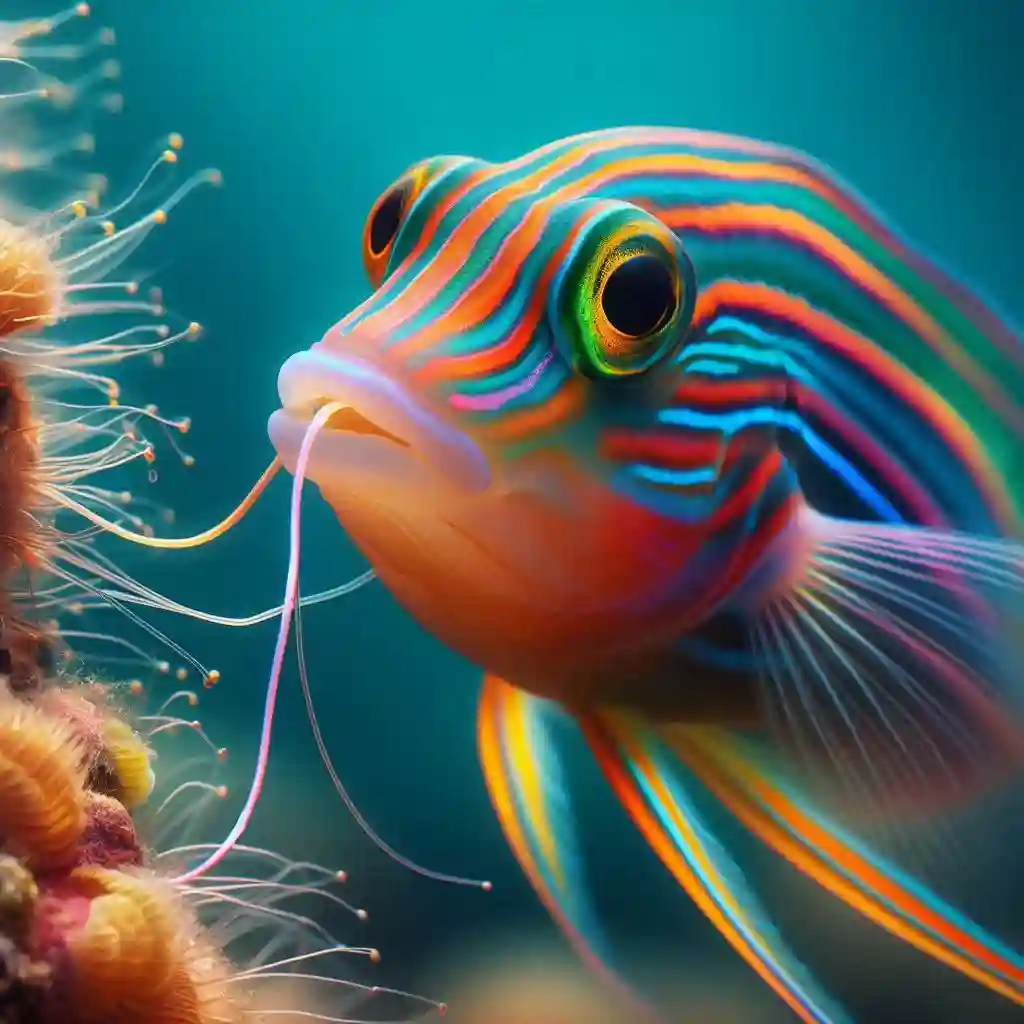
While parasites often get the blame for strings hanging from fish, it’s fascinating to learn there are also non-parasitic factors at play. In some instances, these strings are simply a byproduct of a fish’s natural mucus production.
This can be their way of responding to stress, illness, or even changes in their environment, serving as a protective measure. Additionally, during certain times of the year, fish engage in spawning behaviors that might include releasing strings of eggs or sperm into the water, which can be mistaken for strings.
Interestingly, environmental factors can also contribute. Fish swimming close to debris or aquatic plants might accidentally catch fragments that later appear as strings. Understanding these non-parasitic reasons helps us appreciate the complexity of aquatic life and the adaptability of our finned friends in their underwater world.
Other Fish with String Hanging from Them?
Interestingly, the phenomenon of string hanging from fish isn’t confined to just a single species or habitat. Across the vastness of our planet’s waters, from the cool, flowing rivers inhabited by salmon and trout to the vibrant, colorful world of coral reefs teeming with tropical fish, this curious occurrence can be observed.
Each environment, whether freshwater or saltwater, has its unique challenges and inhabitants, which in turn affects the reasons behind the strings seen on fish.
While the underlying causes might vary, ranging from parasitic infections to environmental factors, the visual cue of a string hanging from a fish serves as a universal sign that warrants closer inspection.
By keeping an open mind and remembering that these strings can stem from a variety of sources, we foster a deeper understanding of the intricate lives of these aquatic creatures and their interactions within their ecosystems.
Fish Behavior and String Occurrence
Fish behaviors play a significant role in the appearance of strings on their bodies. Whether it’s due to skirmishes over territory, the dance of mating rituals, or just the daily hustle and bustle of life in the tank or pond, these activities can sometimes lead to the creation of strings.
It’s not just about the fights or frolics, either. Some fish might rub against surfaces to relieve an itch or irritation, picking up debris that later looks like strings.
Observing your fish’s behavior gives you clues not only to their health and happiness but also to understanding the mysterious strings that sometimes adorn them.
Paying attention to when and how these strings appear can offer insights into the unseen aspects of their watery world, guiding us on how to provide better care and a more suitable environment for our aquatic companions.
Dangers of Ignoring String Hanging from Fish
When you spot a string dangling from your aquatic pal, it might seem like a small oddity, but it’s more than just an underwater fashion statement. Overlooking such signs can lead to unwelcome health woes for your finned friends.
These strings, especially if they’re parasitic, can sap a fish’s vitality, making them lethargic and less able to fend off diseases or evade predators.
On the flip side, even strings that aren’t due to parasites might signal stress or environmental discomfort, situations that, if not remedied, could escalate into bigger health issues.
Acting promptly not only helps keep the fish in tip-top shape but also maintains the harmony of your aquatic ecosystem.
So, while these strings might be small, the impact of ignoring them can be anything but. Keeping a vigilant eye and taking action can make all the difference in your underwater world.
Distinguishing Harmless vs. Dangerous Strings
Spotting the difference between harmless and harmful strings on your fish can be a bit like playing detective in your aquarium. The key is to look for subtle signs that could indicate whether you’re dealing with a pesky parasite or just a benign bit of mucus or debris.
Harmful, parasitic strings often display unique characteristics, such as a segmented body or independent movement, which can be a giveaway that your fish might need some help. On the flip side, harmless strings usually have a smoother, more consistent appearance and remain static.
They might be part of your fish’s normal response to their environment or simply accidental attachments. By honing your observation skills and noting these details, you can become adept at identifying what kind of string you’re seeing and decide on the next steps for keeping your aquatic friends healthy and happy.
How to Spot the Difference: Parasitic vs. Non-Parasitic Strings
Distinguishing between parasitic and non-parasitic strings hanging from your fish can seem daunting, but with a keen eye, you can become quite the expert! First off, parasitic strings often exhibit an almost lifelike behavior; they might wiggle or seem to have their own set of movements, a clear indicator of an unwelcome guest.
These strings may also present a segmented look, akin to the body of a worm. On the flip side, non-parasitic strings tend to have a much more uniform appearance. They’re generally static, showing no signs of independent motion, and appear as smooth, continuous lines.
Remember, these non-parasitic strings could be anything from harmless mucus to environmental debris. By taking note of these details, you’re better equipped to assess the situation in your aquarium and make the best decisions for the health and happiness of your fishy friends.
Addressing the Issue: Treatment and Prevention
If you’ve discovered strings hanging from your fish, taking prompt and appropriate action is key to ensuring their health and happiness. In cases where these strings are the result of parasitic invaders, reaching out for professional advice from a veterinarian or a fish health specialist is a wise move.
They can offer guidance on the most effective treatments, which might include medicated baths or specific parasite removal techniques, tailored to your fish’s needs. On the other hand, if the strings are non-parasitic, improving the environment becomes the main focus.
This means taking steps to enhance water quality, minimize stress triggers in the tank, and keeping a close watch on your fish’s behavior and physical condition for any signs of improvement or further concern. Remember, prevention is always better than cure.
Regular tank maintenance, careful observation, and a nurturing environment can go a long way in keeping those mysterious strings at bay and your aquatic friends thriving.
FAQs
What should I do if I see a string hanging from my fish?
Begin by observing the string’s characteristics (movement, appearance) to determine if it’s parasitic. If in doubt, consult a fish health specialist for advice.
Can strings hanging from fish be prevented?
Yes, maintaining high water quality, reducing stress in the tank, and regular health checks can minimize the occurrence of these strings.
Are all strings hanging from fish harmful?
No, not all strings are harmful. Some are benign and result from natural behaviors or environmental factors.
How often should I check my fish for strings?
Regularly observe your fish as part of your daily care routine. This helps catch any potential issues early.
Can human intervention remove these strings safely?
Never attempt to remove strings without professional advice, as incorrect handling can harm the fish further.

Hello, I’m Aria Cooper, the heart and soul behind Swimmy Buddies. As a devoted fish aficionado, I share my aquatic adventures and expertise to inspire your own underwater explorations. 🐠🌊

